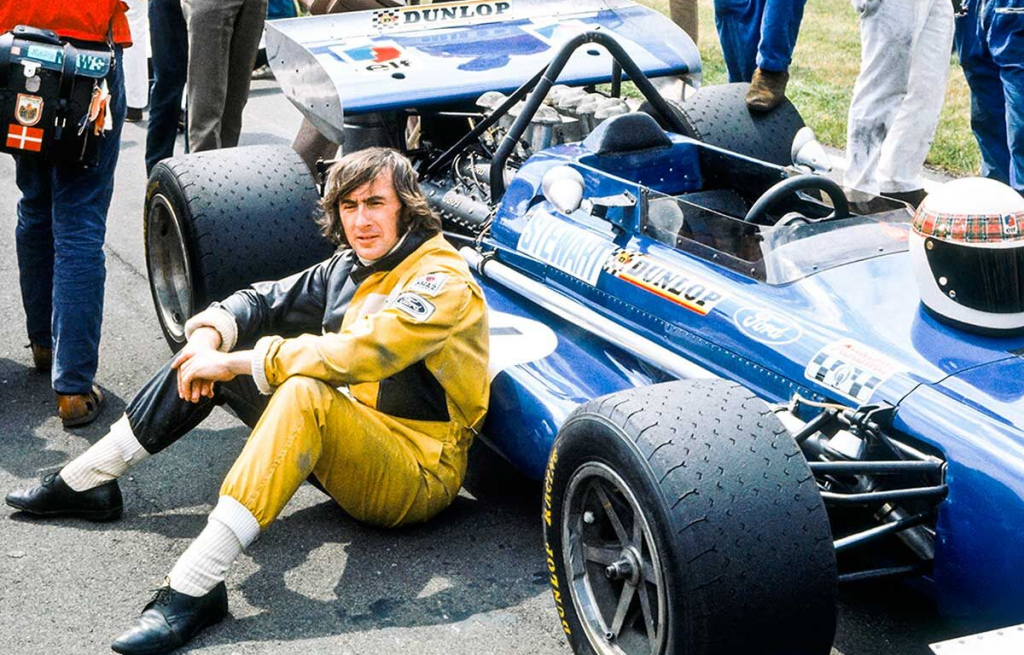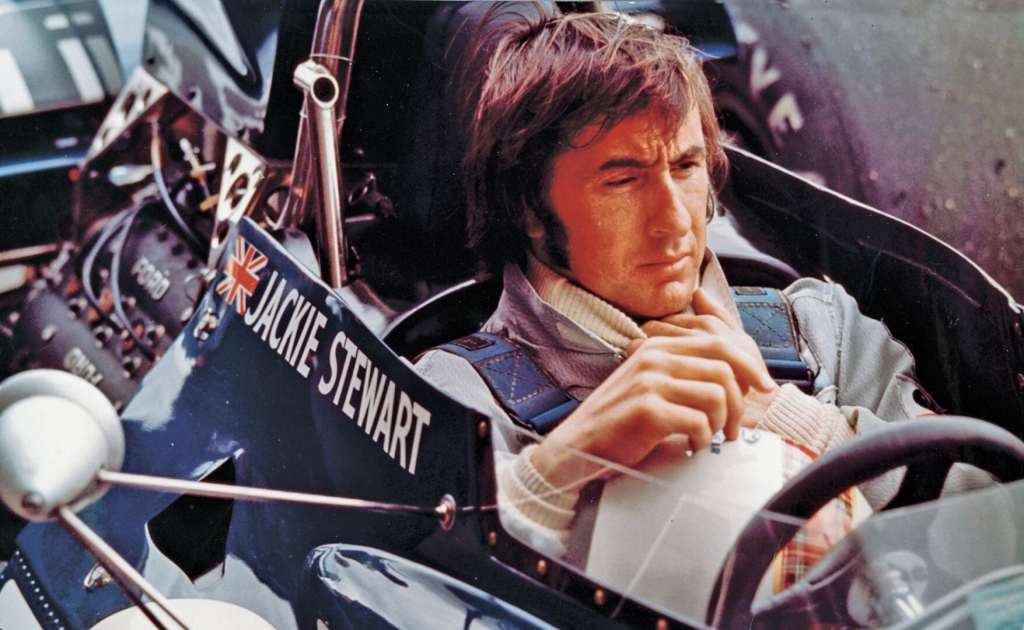Despite his reputation for automobile aeronautics, Sir Jackie Stewart led the crusade for improved safety measures in motorsports. Stewart competed in Formula One from 1965-1973, winning three World Championships. Though he was immensely successful, a crash at the 1966 Belgian Grand Prix prompted him to become an advocate for greater racing safety measures.
While racing at the notoriously dangerous Spa-Francorchamps, Stewart crashed into a telephone pole and a shed before coming to rest in a farmer’s outbuilding. The impact broke the steering column and pinned his leg while the ruptured fuel tanks emptied into the cockpit. There were no track crews to extract him.
“I realized things were wrong with the race track, the cars, the medical side, the fire-fighting, and the emergency crews” Stewart said. “As it turned out I only had a broken collar bone, but it was simply ridiculous. Here was a sport that had serious injury and death so closely associated with it, yet there was no infrastructure to support it, and very few safety measures to prevent it. So, I felt I had to do something.”

After that day, Stewart began his campaign to implement better safety standards in Formula One and other motorsports. While such a movement today may seem logical, at the time, Stewart faced strong opposition to the implementation of safety measures like improved safety barriers, full-face helmets and larger run-off areas. One of his greatest contributions was the development of a Grand Prix medical unit that traveled to all the races.
“…there was criticism from the media, even from some drivers,” Stewart said of his efforts. “It was said I removed the romance from the sport, that the safety measures took away the swashbuckling spectacular that had been. They said I had no guts. But not many of these critics had ever crashed at 150 miles an hour. Fortunately, I was still achieving a lot of success, winning races in hideously dangerous conditions, and that gave me greater influence.”
Though there was resistance at first, Stewart’s ideas became widely accepted as standard practice not only in Formula One, but in nearly all forms of racing. The number of driver deaths at Formula One races shrunk rapidly from 8 during grand prix races in the 1970s to just four total since 1984.

Stewart went on to become one of the most popular F1 drivers even well into his retirement. He was the first true superstar of Formula One, with appearances in TV commercials, corporate boardrooms and as a broadcaster, despite the flak he had taken to introduce more stringent safety measures in the sport. “I wouldn’t have done what I did if I had wanted to win a popularity contest”, Stewart once said.
Even today, over 40 years after he last stood on the grid of an F1 race, “The Flying Scot” is still among the most widely known and respected personalities of the sport.